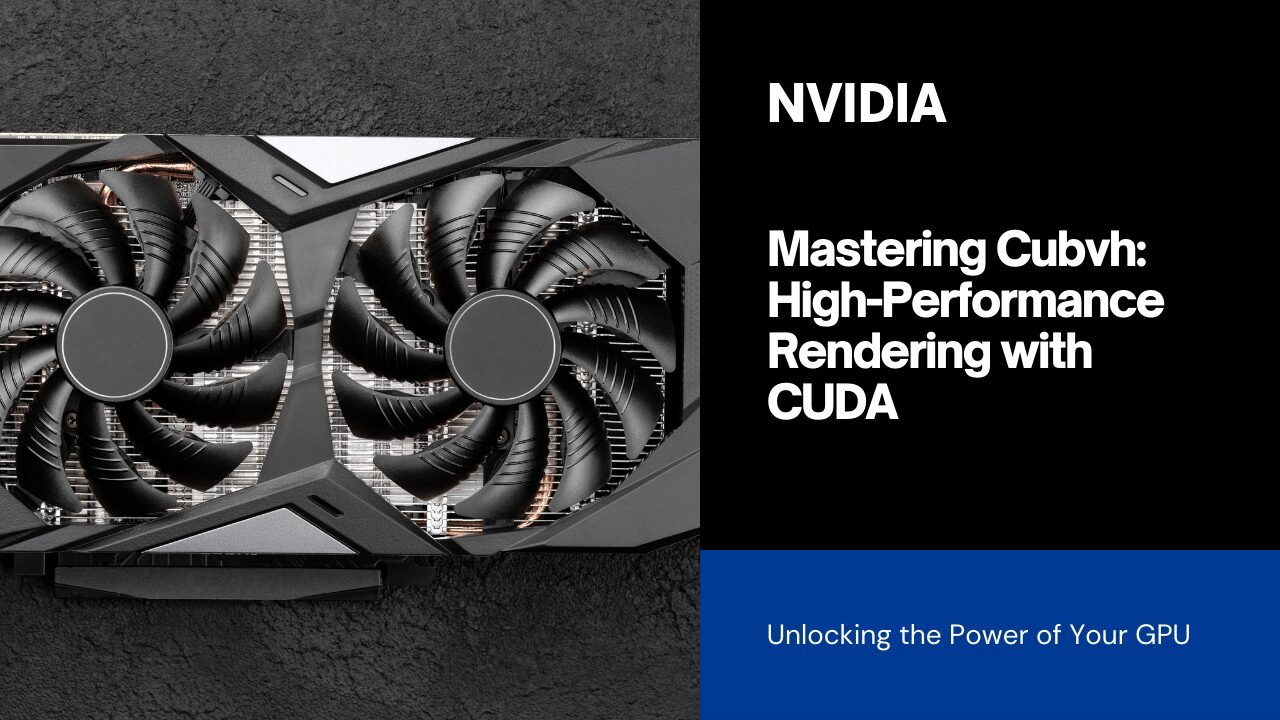Introduction
Welcome to the era where high-performance rendering is not just a desire but a necessity for professionals in computer graphics. The demand for real-time rendering of complex scenes has never been more critical, and CUDA technology, developed by Nvidia, has risen as the game-changer in this domain. This article delves into Cubvh, a pioneering project that leverages CUDA for mesh manipulation and rendering, pushing the boundaries of what’s possible in graphics programming.
Rendering in Computer Graphics: Precision and Efficiency
The cornerstone of computer graphics, rendering, transforms digital models into stunning visuals on your screen. It’s a process that demands both precision and efficiency, especially as scenes grow in complexity and users’ expectations for real-time rendering soar. Enter CUDA, Nvidia’s parallel computing platform, which has revolutionized rendering by leveraging the power of GPU acceleration.
Also Read: What is QXEFV and Why You Should Care About It (2024)
Understanding Cubvh and CUDA Mesh BVH Tools

At the heart of this revolution is Cubvh, a suite of tools that epitomizes the fusion of high-fidelity graphics and optimized computation. Cubvh utilizes Bounding Volume Hierarchies (BVH), a critical data structure that boosts rendering speed by efficiently omitting non-visible objects from the rendering process. This synergy between Cubvh and CUDA opens up new avenues for rendering complex 3D models with unparalleled speed and quality.
Setting Up Cubvh
Embarking on the Cubvh journey requires a foundational setup that includes installing the CUDA toolkit and ensuring you have a compatible Nvidia GPU. This section guides you through the setup process, from downloading the CUDA toolkit to configuring your environment for Cubvh, ensuring you’re equipped to leverage the full potential of GPU-accelerated rendering.
Building BVH with Cubvh
The creation of a BVH is a pivotal step in using Cubvh. This involves loading your 3D mesh data into memory and utilizing Cubvh’s tools to construct the BVH. This process is vital for efficient rendering, as it organizes objects in your scene into a hierarchical tree, drastically reducing rendering times by focusing only on visible objects.
Exploring Real-time Rendering Capabilities
The combination of Cubvh and CUDA technology is a powerhouse for real-time rendering. This section explores how leveraging Bounding Volume Hierarchies and the parallel computing capabilities of Nvidia GPUs can achieve efficient and real-time rendering of even the most complex scenes, bringing your digital creations to life with speed and fidelity never seen before.
Example Applications
Cubvh’s utility extends across various applications, from conducting ray-mesh intersection tests to querying unsigned and signed distances. This part of the article showcases practical examples of how Cubvh can be utilized, including building a mesh normal renderer using ray_trace, providing readers with insights into real-world applications of Cubvh and CUDA technology.
Conclusion
Mastering Cubvh and harnessing CUDA Mesh BVH tools can significantly elevate your rendering projects. With the correct setup and a deep understanding of mesh manipulation and optimization techniques, you can unlock the full potential of GPU-accelerated rendering. Embrace the power of Cubvh, and transform the way you render complex 3D models. Happy rendering!🚀🎨

